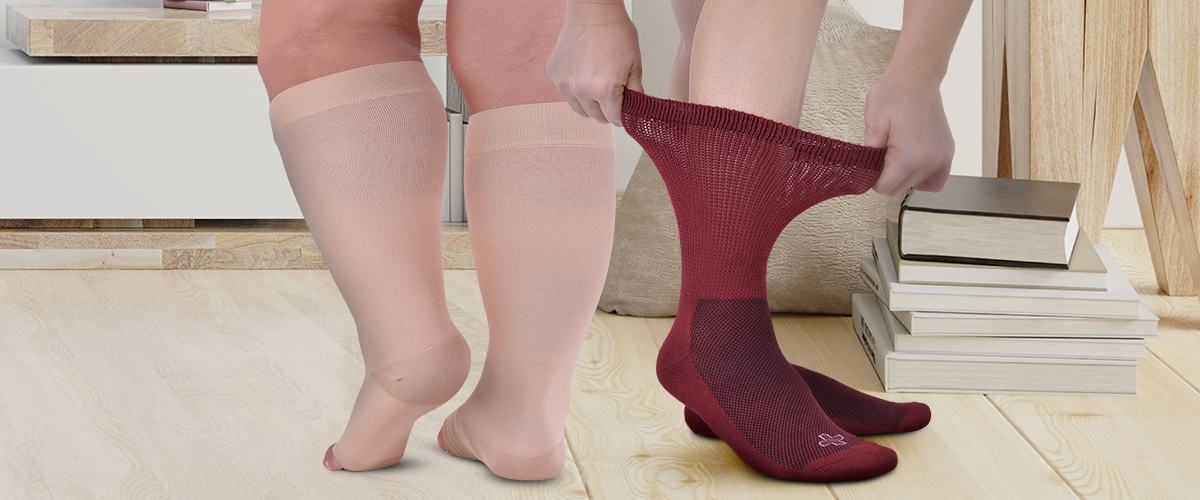
Compression Socks vs. Diabetic Socks: A Comparison of Features and Benefits
When it comes to choosing the right socks for your needs, there are many options available on the market. Two types of socks that are often compared are compression socks and diabetic socks. Both types of socks are designed to provide comfort and promote health, but they have different features and benefits.
In this article, we will compare compression socks and diabetic socks to help you choose the best option for you.
What Are Compression Socks?
Compression socks are socks specifically designed to apply pressure to your ankles, legs, and feet. The pressure helps improve blood flow and prevent blood clots.
But who should use compression socks?
Compression socks are great for a wide range of people, including athletes, travelers, people who stand or sit for extended periods of time, and those who have medical conditions that affect blood circulation.
Athletes wear compression socks to improve their performance and reduce the risk of injury, while travelers wear them to prevent swelling and blood clots that can occur during long flights. Compression socks can also be beneficial for people with conditions such as varicose veins, deep vein thrombosis, and lymphedema.
So, if you fall into any of these categories, compression socks may be a great addition to your sock drawer. They can help to reduce swelling, and fatigue in your legs and feet, and may even help to prevent serious health conditions.
What Are Diabetic Socks?
Diabetic socks are specifically designed for individuals with diabetes, as this condition can lead to nerve damage and poor blood circulation in the feet, which in turn can cause various complications such as infections and foot ulcers. Diabetic socks offer comfort, protection, and cushioning to the feet to help prevent such complications.
Comparison of Features and Benefits
Compression socks and diabetic socks may seem similar at first glance, but they have significant differences in their features and benefits. Understanding these differences can help you choose the right socks for your specific needs.
|
Compression Socks |
Diabetic Socks |
|
|
Purpose |
Improve blood flow, prevent blood clots |
Prevent foot complications in people with diabetes and/or neuropathy |
|
Fit |
Tight-fitting with different compression levels indicated in mmHg. |
Loose-fitting top to prevent constriction and provide maximum comfort. |
|
Toe Construction |
Usually has a normal toe seam. |
Seamless toe construction to prevent rubbing and blisters. Many models will have a small seam but placed higher to it will not cause rubbing. |
Which Socks Are Right for You?
Ultimately, the choice between compression socks and diabetic socks depends on your individual needs.
If you have poor blood circulation or are at risk of blood clots, compression socks may be the best choice for you. On the other hand, if you have diabetes and are at risk for foot complications, diabetic socks may be the best choice.
It's important to talk to your doctor or healthcare provider before choosing either type of sock, as they can help you determine which type of sock is best for your individual needs and recommend specific styles.
FAQ
What is the primary difference between compression socks and diabetic socks?
The primary difference between compression socks and diabetic socks is their intended purpose.
Are compression socks comfortable?
Compression socks can be uncomfortable for some people because they are designed to fit tightly to provide compression.
Do diabetic socks have seamless toe construction?
Yes, diabetic socks have seamless toe construction to prevent rubbing and blisters, which is especially important for people with diabetes.
